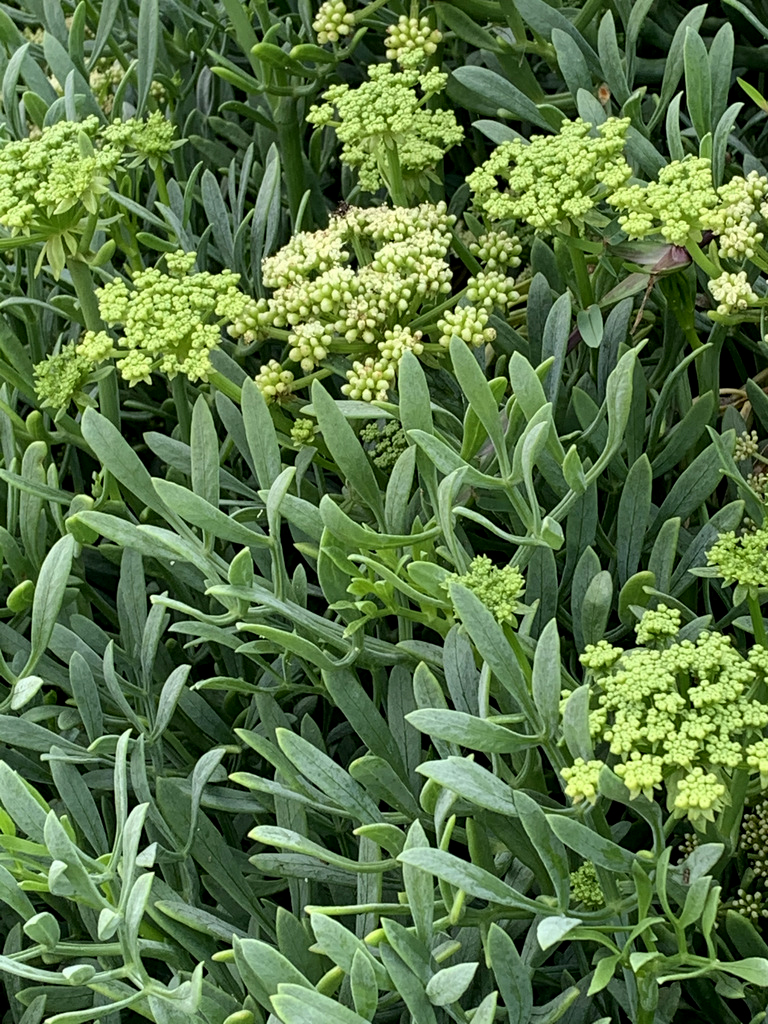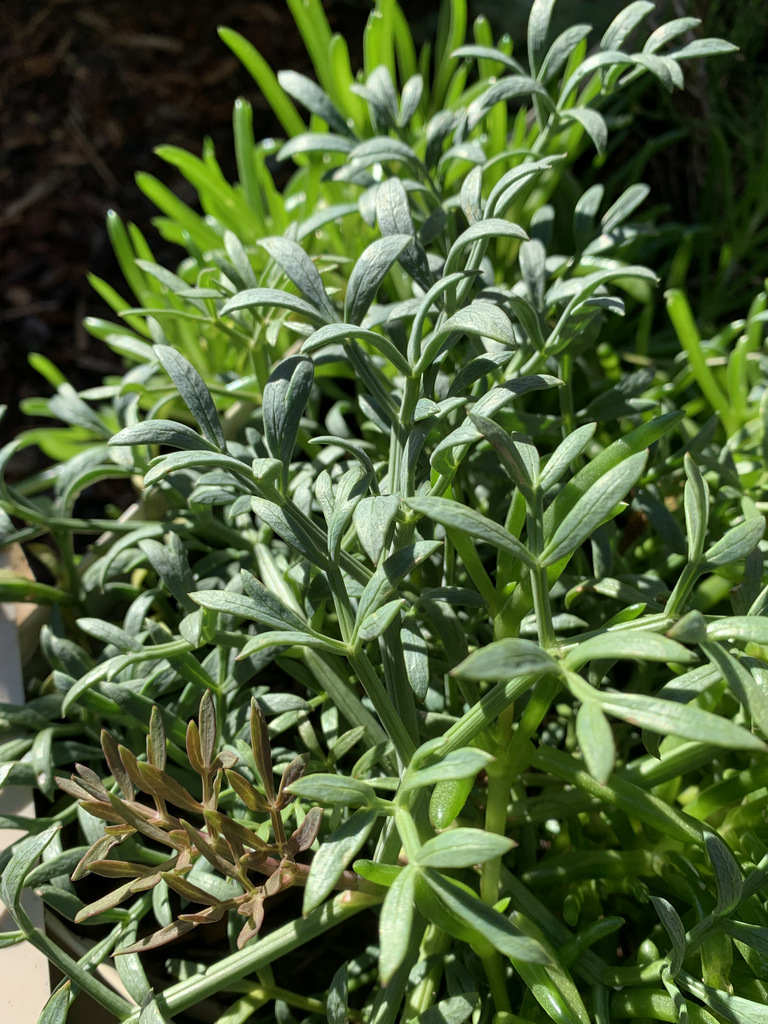Rock Samphire is a salty succulent often found growing in rock crevasses which give the maritime plant its name. The fleshy succulent green-blue leaves are so delicious that you’d want to grow it all year round in your edible garden.

Rock Samphire – Photo © The Gourmantic Garden
What is Rock Samphire
Rock samphire (Crithmum maritimum) is also known as sea fennel, true samphire and mermaid’s kiss. It’s not to be confused with samphire / sea asparagus / beaded samphire (Sarcocornia quinqueflora) which is a different genus. Although it’s found around our beaches, it’s not native to Australia and is also commonly found around the Mediterranean Sea, the Atlantic Coast and British Isles.
Looking at the perennial succulent with its with blue-green stems and leaves and yellow-green flowers, it’s easy to tell that it is related to the carrot and parsley family.
How to Grow Rock Samphire

Rock Samphire – Photo © The Gourmantic Garden
Rock Samphire grows up to 30cm tall to 50 cm wide. The coastal plant is drought tolerant, suitable for pots and well-suited to salty coastal soil. It favours full sun and in soil with good drainage. The sea vegetable is ideal for a coastal garden such as mine where it’s growing in the corner of a raised garden bed alongside Australian native plants such as beaded samphire, karkalla, pigface and sea celery.
Seeds can be sown in spring and autumn and take 7-10 days to germinate. Plant at least 30 cm apart as it has a habit of spreading. Flowering takes place during late summer after which seeds can be sown. Alternatively, you can grow the sea vegetable by purchasing a seedling or a cutting.
Plant Care

Rock Samphire – Photo © The Gourmantic Garden
Once the plant is established it needs very little care aside form the application of a seaweed solution every fortnight. Occasionally, I give mine a drink of sea water to maintain the salinity of the plant. One key point to mention is that don’t be tempted to overwater the plant. It needs good drainage otherwise the leaves start to yellow and drop.
Harvesting and Culinary Uses
The leaves are at their best during spring and summer but they can be harvested any time. Use garden scissors to pick the leaves and don’t be tempted to pull them away from the plant.
Rock samphire has an intense flavour profile that is a cross between a carrot and parsley with a salty, seaweed note. It’s texture is crunchy and it pairs well with fish and seafood. Other uses include adding it to salads, omelettes, pickling the leaves, pairing them with tomatoes and smokes salmon.
Rock Samphire in Cocktails
Rock samphire is used as a botanical in some gins. It can be muddled to release the juices and added to a Gin & Tonic for a seaside variation or used in a vodka Martini. Dehydrated and turned into powder, it can be used it as a salt rim in cocktails. Pickled, it goes well in a Dirty Martini or a Bloody Mary. Steeped in vodka to make a tincture, it can be turned into an aromatic spray or simply used in a variation on the Girt by Sea Cocktail.

